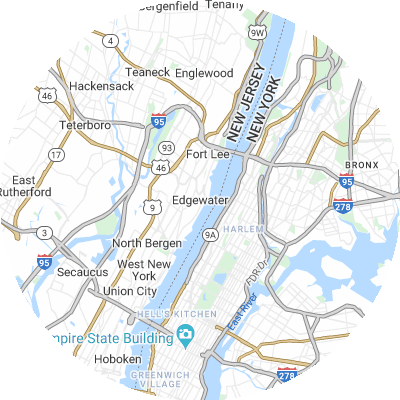Signs You May Need Gutter Guards
Gutter guards aren't always necessary, but evidence of blocked gutters is clear. Indicators of chronic gutter troubles are:
- Mold growth, peeling exterior paint, or interior water stains on walls near gutters.
- Soggy ground or visible erosion around your foundation
- Visibly saggy, damaged, or misaligned gutters that no longer correctly direct rainwater
- Frequent clogs that lead to overflow and water spilling over gutters
- Leaky seams or joints where water leaks from the gutters
How To Choose a Gutter Guard Installer
Assess Their Experience
Providers with years of gutter guard installation experience that have handled many different styles and models will know how to take accurate measurements and attach guards to your home’s unique dimensions. Get in touch with these companies to learn about their experience and ask for local references.
Verify Proper Licensing and Insurance
Verify that the businesses you're considering have valid licenses, bonding, workers compensation coverage, and general liability insurance. This shields you in case of any incidents that could arise. Ask potential providers for current licensing and insurance papers.
Choose Reputable Brands
Seek out companies that carry leading reputable gutter guard brands such as Gutter Helmet and LeafFilter. Be wary of companies only offering generic no-name or their own off-brand guards, as these likely have not undergone the same rigorous testing as major brands.
Seek Custom Fit Services
For optimal performance, guards should be custom fitted on-site to fit your gutters. Choose a company that custom sizes and cuts guards for your home rather than using one-size-fits-all guards. Accurately fitted guards minimize gaps where debris can get trapped.
Examine Warranties
Top gutter guard installers often offer 20-year or lifetime warranties covering clogs, leaks, rust, and other issues. When picking a company, carefully examine the warranty details for both materials and workmanship guarantees. Warranties provide the most effective protection for your gutter investment.
Check Reviews and Referrals
Take some time to research online reviews on sites such as Google Reviews, the Better Business Bureau (BBB), or Yelp to see what customers say about their experience. You can also ask your neighbors for recommendations on quality gutter guard businesses near you. When researching potential providers, you should choose companies with positive reviews consistently over time rather than just one or two reviews.
Types of Gutter Guards
There are six primary types of gutter guards. These include the following:
- Brush guards are just what they sound like: large brush bristles that sit in your gutters to catch debris while letting water through. Brush guards cost around $4.06 per linear foot.
- Foam guards are lightweight and easy to install. Debris collects on the foam instead of in your gutter. Foam guards cost roughly $2.47 per linear foot.
- Screen guards have large holes that let water through while blocking debris. Screen guards cost around $4.66 per linear foot.
- Mesh guards stop debris but allow water to flow through. Mesh guards have even smaller holes than screen guards. They're durable and let debris slide off as opposed to sitting on top of the gutters. On average, you can expect to spend $4.34 per linear foot for mesh guards.
- Micro-mesh guards have even smaller holes than mesh guards and allow even less debris into your gutters than mesh. These types of guards are very effective. On average, you can expect to spend $5.40 per linear foot for micro-mesh guards.
- Surface tension guards, also called reverse curve guards, use surface tension to encourage water to flow into gutters while debris slides off. Typically, they can be seen from the ground. Surface tension guards cost around $3.42 per linear foot.














